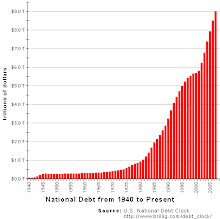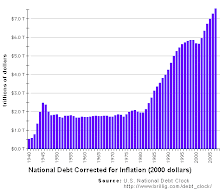Monday, June 2, 2008
Personal Investments - Learning Objectives
After studying this module, you should be able to:
• define compound interest.
• state the equation that relates the present value and future value of an investment based on the interest rate (i.e., rate of return) and the number of years.
• calculate the future value of an investment from the present value, rate of return (interest rate), and number of years.
• calculate the present value of an investment from the future value, rate of return (interest rate), and number of years.
• state the rule of 70 and explain its function.
• use the rule of 70 to approximate the relationship between present and future values.
• explain how compound interest is most beneficial to people who start saving as soon as possible, when there is a long time horizon.
• list and explain the four characteristics of investments that should be considered when making decisions about personal investments.
• define rate of return, interest rate, nominal rate of return, and real rate of return.
• use numerical examples to explain the difference between a nominal rate of return (nominal interest rate) and a real rate of return (real interest rate).
• define risk, market risk, bankruptcy risk
• explain the relationship between risk and rate of return.
• define liquidity and explain the relationship between liquidity and rate of return.
• define tax breaks and explain the relationship between tax breaks and rate of return.
• explain how deposits in bank accounts are typically used to facilitate transactions.
• define certificates of deposit and explain why they typically pay a higher rate of return than regular savings accounts.
• define bonds and explain the difference between corporate bonds, government bonds, municipal bonds, and junk bonds.
• define stocks, dividends, and capital gains.
• explain the difference between blue chip stocks and aggressive growth stocks.
• define diversification.
• define mutual funds and explain how their primary benefit is diversification.
• define a prospectus and explain its function.
• define money market funds.
• compare and contrast the following types of investments based on their potential rate of return, liquidity, risk and tax breaks: bank accounts, money market funds, certificates of deposit, bond mutual funds, blue chip stock mutual funds, aggressive growth stock mutual funds, and real estate.
• define transactions money and explain what types of investments are appropriate for transactions money.
• explain what types of investments are appropriate for money you are saving for a down payment on a house or a car.
• explain what types of investments might be considered for money you are investing for retirement.
• define compound interest.
• state the equation that relates the present value and future value of an investment based on the interest rate (i.e., rate of return) and the number of years.
• calculate the future value of an investment from the present value, rate of return (interest rate), and number of years.
• calculate the present value of an investment from the future value, rate of return (interest rate), and number of years.
• state the rule of 70 and explain its function.
• use the rule of 70 to approximate the relationship between present and future values.
• explain how compound interest is most beneficial to people who start saving as soon as possible, when there is a long time horizon.
• list and explain the four characteristics of investments that should be considered when making decisions about personal investments.
• define rate of return, interest rate, nominal rate of return, and real rate of return.
• use numerical examples to explain the difference between a nominal rate of return (nominal interest rate) and a real rate of return (real interest rate).
• define risk, market risk, bankruptcy risk
• explain the relationship between risk and rate of return.
• define liquidity and explain the relationship between liquidity and rate of return.
• define tax breaks and explain the relationship between tax breaks and rate of return.
• explain how deposits in bank accounts are typically used to facilitate transactions.
• define certificates of deposit and explain why they typically pay a higher rate of return than regular savings accounts.
• define bonds and explain the difference between corporate bonds, government bonds, municipal bonds, and junk bonds.
• define stocks, dividends, and capital gains.
• explain the difference between blue chip stocks and aggressive growth stocks.
• define diversification.
• define mutual funds and explain how their primary benefit is diversification.
• define a prospectus and explain its function.
• define money market funds.
• compare and contrast the following types of investments based on their potential rate of return, liquidity, risk and tax breaks: bank accounts, money market funds, certificates of deposit, bond mutual funds, blue chip stock mutual funds, aggressive growth stock mutual funds, and real estate.
• define transactions money and explain what types of investments are appropriate for transactions money.
• explain what types of investments are appropriate for money you are saving for a down payment on a house or a car.
• explain what types of investments might be considered for money you are investing for retirement.
Subscribe to:
Post Comments (Atom)






Investment matters are not as complex as economic ones. I can never figure out why theirs so many smart people in the investment finance business. I would think many of them would quickly get bored with this kind of stuff.
ReplyDelete